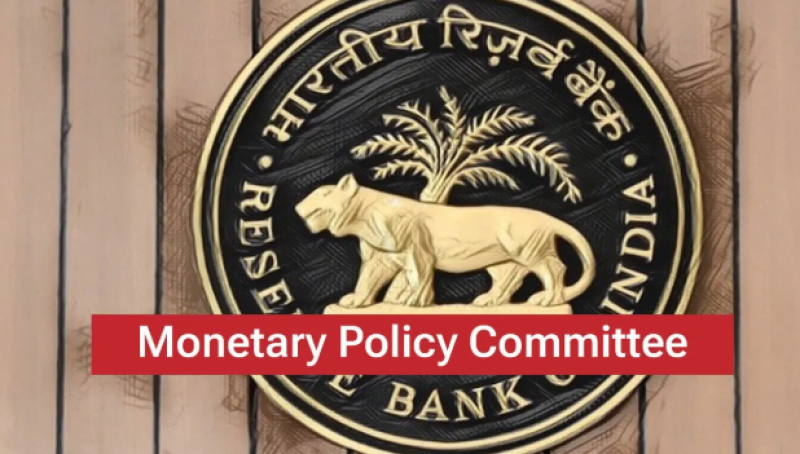The October meeting of the Monetary Policy Committee (MPC) has once again underlined the Reserve Bank of India’s instinct for prudence. Policy rates were left unchanged — repo at 5.5%, the standing deposit facility at 5.25%, and the marginal standing facility and bank rate at 5.75% — while the stance remained neutral. At first glance, this looks like inertia, but in a broader perspective, it represents foresight. India today faces a complex landscape: robust domestic momentum on one hand, and uncertain external conditions on the other. The RBI’s decision signals that stability, not spectacle, is the wiser strategy.
Growth Performance and Domestic Indicators
India’s real GDP growth of 7.8% in Q1 FY26, with GVA growth at 7.6%, is a reminder that the domestic economy remains resilient. Manufacturing activity, after a prolonged phase of underperformance, has accelerated. Services, at over 9% growth, continue to be the backbone of expansion, while agriculture has been supported by favourable monsoon conditions. High-frequency indicators confirm the story: cement production is up 8.8%, steel consumption by 8.7%, and tractor sales by over 17%. PMI indices for both manufacturing and services are at multi-year highs, underscoring business confidence.
Yet projections for the full year are more tempered, with GDP expected at 6.8%, moderating through successive quarters. This adjustment reflects not domestic slack but external realities — tariff barriers, slowing global demand, and geopolitical uncertainty. India’s growth is robust, but it will not be immune to the tremors of a slowing world economy.
Inflation – A Policy Window
On inflation, the numbers have given rare breathing room. Headline CPI stood at 1.6% in July and 2.1% in August, with the FY26 projection revised down to 2.6%. Food prices, the traditional source of volatility, have eased considerably, with cereals and vegetables showing disinflation. Core inflation remains contained, and GST rationalisation has delivered direct benefits by lowering rates on items that account for over 11% of the CPI basket.
For households, this means greater purchasing power; for industry, it lowers input pressures. More importantly, it offers the RBI flexibility. But the window is narrow. Inflation is projected to edge back to 4% by Q4, reflecting base effects, and oil or weather shocks can still disrupt the trend. The lesson is that India has earned space, but cannot afford complacency.
Regulatory and Credit Reforms – The Hidden Story
The significance of this MPC meeting lies as much in the regulatory measures as in the rate decision. The RBI has removed restrictions on large corporate borrowing, raised limits on loans against shares (from ₹20 lakh to ₹1 crore) and IPO financing (from ₹10 lakh to ₹25 lakh), and reduced risk weights for NBFCs financing operational infrastructure. These measures ease the cost of capital, expand credit availability, and support the investment cycle.
Equally important is the simplification drive. Nearly 9,000 circulars have been consolidated into subject-wise compendia, reducing compliance burdens. Exporters have been given extended timelines for repatriation of funds from IFSC foreign currency accounts (three months, up from one) and merchanting trades (six months, up from four). These may appear technical, but they directly improve the ease of doing business.
Such measures will not grab headlines, yet they provide the foundation for sustained investment and trade. In an economy where transaction costs have long been a drag, these steps represent quiet but powerful reform.
External Sector – Strengths and Fragilities
India’s external account has shown surprising resilience. The current account deficit narrowed to US$ 2.4 billion (0.2% of GDP) in Q1, supported by a strong services surplus and record remittances. FDI inflows rose 33% year-on-year to US$ 37.7 billion, with net inflows more than tripling to US$ 10.8 billion. Foreign exchange reserves at US$ 700 billion provide a formidable buffer, covering over 11 months of imports.
However, vulnerabilities remain. Portfolio flows have been volatile, with outflows of nearly US$ 4 billion since April. Merchandise exports are under pressure from tariffs and weak demand. The rupee, while less volatile than peers, faces depreciation risks if global conditions tighten further. This is the paradox of the external sector: substantial buffers coexist with persistent fragility.
Free Trade Agreements – Strategic Instruments
Trade policy is becoming an essential complement to monetary and fiscal policy. Here, clarity on timelines is crucial.
- The India–EFTA Trade and Economic Partnership Agreement (TEPA) is already in force from October 1, 2025. It eliminates tariffs on 100% of EFTA’s non-agricultural products, offers concessions on processed agricultural goods, and secures Indian concessions on 82.7% of tariff lines covering 95.3% of EFTA exports. Sensitive sectors such as dairy and coal are excluded. Crucially, it carries a US$ 100 billion investment commitment over 15 years and aims to create 1 million direct jobs. With 14 chapters, covering services, IPR, investment, and professional MRAs, TEPA represents a comprehensive partnership that combines trade access with technology and capital.
- The UK–India FTA, signed in July 2025, has not yet come into effect. Ratification and domestic processes remain. Once in force, it will deepen access for services and investment, particularly in sectors where India is globally competitive.
- The EU–India FTA remains under negotiation. Several chapters are closed, and momentum is evident, but the agreement is not yet operational. Its eventual conclusion will be a landmark, not only in terms of trade but also in aligning India with European standards in sustainability and digital regulation.
For India, these agreements are not transactional; they are strategic hedges. In a world of rising protectionism, diversifying export markets and securing long-term investment flows are as important as interest rate decisions.
Strategic Implications – Beyond the Numbers
The October MPC reflects three important themes:
First, monetary policy is being used as an anchor of stability. By holding rates despite low inflation, the RBI avoids premature easing, keeps its powder dry, and signals to global markets that India will not gamble with credibility.
Second, the government and central bank are working in tandem on structural reforms. GST rationalisation, compliance simplification, and credit easing are steps that build confidence among businesses and investors.
Third, trade agreements are being deployed as instruments of economic strategy, securing investment, jobs, and market access in ways that pure tariff liberalisation cannot achieve.
Policy Recommendations
- Leverage the inflation window – use the low-inflation environment to accelerate reforms in logistics, contract enforcement, and financial deepening. These will have longer-lasting effects than temporary rate moves.
- Prepare for EU standards – Indian exporters must invest now in certification, testing, and compliance to meet Europe’s sustainability and digital requirements ahead of an eventual FTA.
- Safeguard external resilience – while reserves are strong, portfolio volatility requires careful capital market management. Expanding hedging tools and deepening domestic bond markets should be policy priorities.
- Link monetary and industrial policy – the stability offered by the MPC should be complemented by PLI 2.0, GST 2.0, and targeted fiscal support for manufacturing and technology-intensive sectors.
Stability as Strategy
The October MPC outcome is more than a rate hold. It is a statement of intent: India is choosing steadiness over theatrics. Growth is strong, inflation benign, and reforms advancing, but global risks demand caution. By combining monetary stability with structural reforms and a new generation of trade agreements, India is positioning itself as a resilient economy in a turbulent world.
The pause is not passive. It is active strategy — to safeguard credibility, support investment, and align monetary policy with trade and industrial objectives. In uncertain times, stability is not weakness. It is leadership.
Authored by Rohit Kumar Singh, Ph.D. (Eco), PMP®.


.jpg)